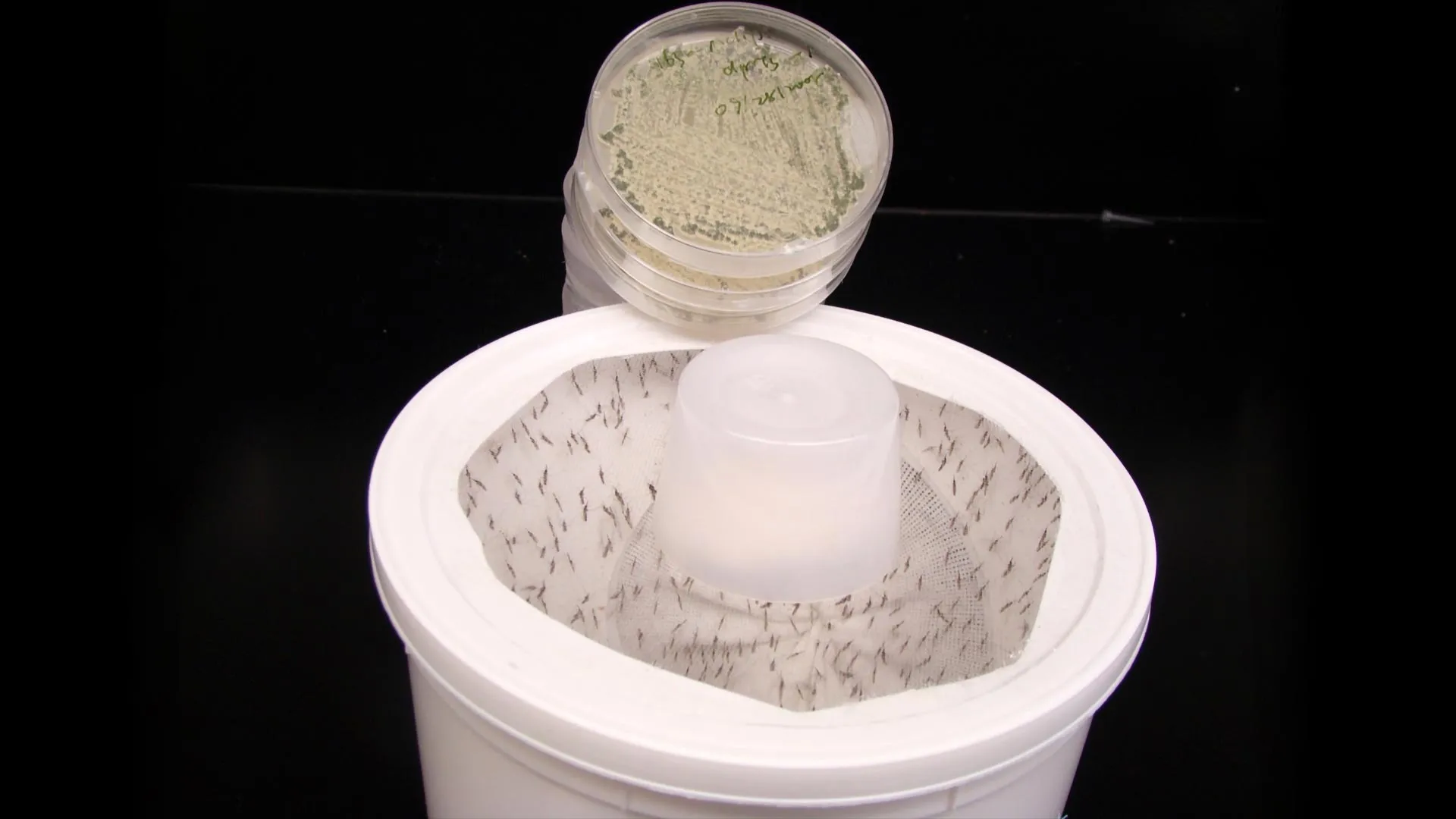Scientists turn flower fragrance into a mosquito killer
This “perfumed bioweapon” could revolutionize mosquito control worldwide, especially as warming climates expand their reach.
- Date:
- October 27, 2025
- Source:
- University of Maryland
- Summary:
- A team of researchers has developed a floral-scented fungus that tricks mosquitoes into approaching and dying. The fungus emits longifolene, a natural scent that irresistibly draws them in. It’s harmless to humans, inexpensive to produce, and remains potent for months. This innovative biological control could be crucial as mosquitoes spread with climate change.
- Share:

To combat mosquito-borne illnesses that claim hundreds of thousands of lives each year, scientists have enlisted an unexpected partner: a fungus that gives off a floral scent.
By exploiting mosquitoes' attraction to flowers, an international team of researchers engineered a new strain of Metarhizium fungus that releases a sweet aroma similar to real blooms. The modified fungus draws in the insects and infects them, ultimately killing them.
The scientists were inspired by natural fungi that emit a pleasant chemical known as longifolene, which they discovered could attract mosquitoes. Building on that idea, they created a fungus that acts like a lethal perfume for the pests, offering a promising tool against malaria, dengue, and other deadly diseases that are becoming increasingly resistant to chemical pesticides. Their findings were published in Nature Microbiology on October 24, 2025.
How the "Perfumed" Fungus Works
"Mosquitoes need flowers because they provide nectar, a crucial source of food for them, and they are drawn to flowers through their scents," explained paper co-author Raymond St. Leger, a Distinguished University Professor of Entomology at the University of Maryland. "After observing that some types of fungi could trick mosquitoes into thinking they were flowers, we realized we could turbo-charge the attraction by engineering fungi to produce more longifolene, a sweet-smelling compound that's already very common in nature. Before this study, longifolene wasn't known to attract mosquitoes. We're letting nature give us a hint to tell us what works against mosquitoes."
According to St. Leger, the floral-scented fungus provides an easy and accessible method for controlling mosquito populations. The spores can simply be placed in containers indoors or outdoors, where they gradually release longifolene over several months. When mosquitoes come into contact with the fungus, they become infected and die within a few days. In laboratory tests, the fungus wiped out 90 to 100% of mosquitoes, even in environments filled with competing scents from people and real flowers. Despite its potency, the fungus is completely harmless to humans.
Safe, Targeted, and Environmentally Friendly
"The fungus is completely harmless to humans as longifolene is already commonly used in perfumes and has a long safety record," St. Leger said. "This makes it much safer than many chemical pesticides. We've also designed the fungus and its containers to target mosquitoes specifically rather than any other insects and longifolene breaks down naturally in the environment."
In addition, unlike chemical alternatives that mosquitoes have gradually become resistant to, this biological approach may be nearly impossible for mosquitoes to outsmart or avoid.
"If mosquitoes evolve to avoid longifolene, that could mean they'll stop responding to flowers," St. Leger explained. "But they need flowers as a food source to survive, so it would be very interesting to see how they could possibly avoid the fungus yet still be attracted to the flowers they need. It'll be very difficult for them to overcome that hurdle, and we have the option of engineering the fungus to produce additional floral odors if they evolve to specifically avoid longifolene."
Affordable and Scalable Global Potential
What also makes this new fungal technology particularly promising is how practical and affordable it is to produce. Other forms of Metarhizium are already commonly cultivated around the world on cheap materials like chicken droppings, rice husks and wheat scraps that are readily available after harvest. The affordability and simplicity of the fungus could be key to reducing mosquito disease-related deaths in many parts of the world, especially in poorer countries in the global south.
Finding effective new weapons against mosquitoes could be more important than ever. St. Leger warns that in the future, mosquito-borne diseases currently limited to tropical regions could threaten new targets, including the United States. With rising global temperatures and the growing unpredictability of weather, disease-carrying mosquitoes have begun to spread to new areas beyond their usual habitats.
"Mosquitoes love many of the ways we are changing our world," St. Leger said. "Right now, we're hoping to use these approaches in Africa, Asia and South America. But one day, we may need them for ourselves."
Next Steps in the Fight Against Mosquito-Borne Disease
St. Leger and his colleagues are now testing the fungus in larger outdoor trials to prepare it for regulatory review.
"It's not as if you're going to necessarily find a silver bullet to control mosquitoes everywhere, but we're trying to develop a very diverse and flexible set of tools that people in different parts of the world can use and choose from," St. Leger said. "Different people will find different approaches work best for their particular situation and the particular mosquitoes they're dealing with. In the end, our goal is to give people as many options as possible to save lives."
Story Source:
Materials provided by University of Maryland. Note: Content may be edited for style and length.
Journal Reference:
- Dan Tang, Jiani Chen, Yubo Zhang, Xingyuan Tang, Xinmiao Wang, Chaonan Yu, Xianxian Cheng, Junwei Zhang, Wenqi Shi, Qing Zhen, Shuxing Liu, Yizhou Huang, Jiali Ning, Guoding Zhu, Meichun Zhang, Juping Hu, Etienne Bilgo, Abdoulaye Diabate, Sheng-Hua Ying, Jun Cao, Raymond J. St. Leger, Jianhua Huang, Weiguo Fang. Engineered Metarhizium fungi produce longifolene to attract and kill mosquitoes. Nature Microbiology, 2025; DOI: 10.1038/s41564-025-02155-9
Cite This Page: